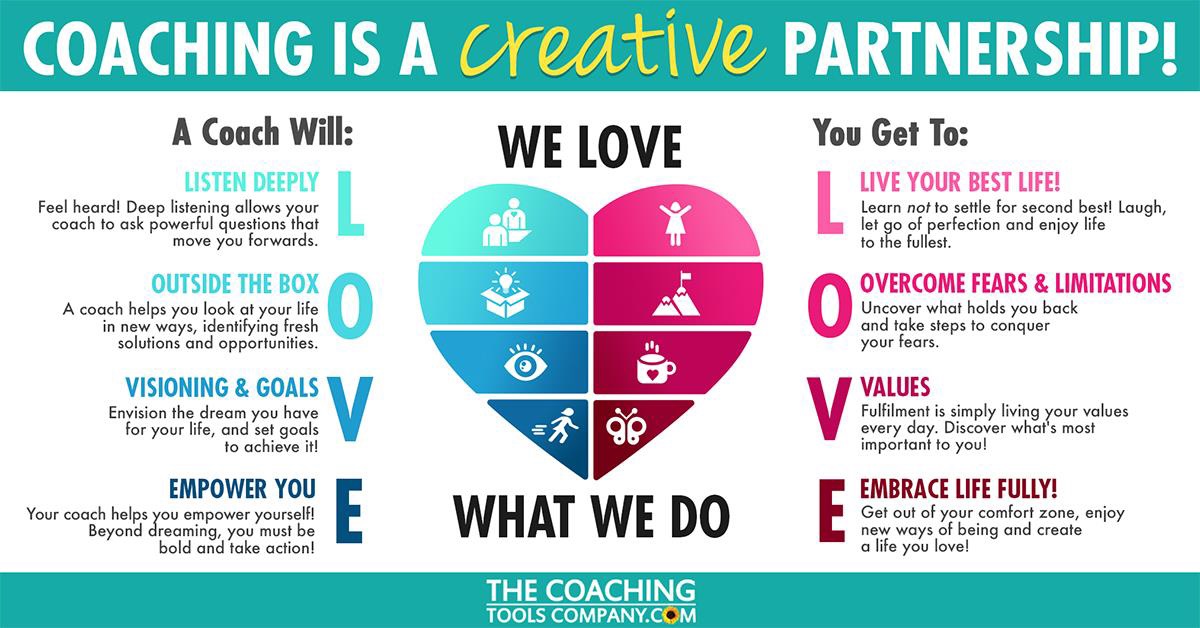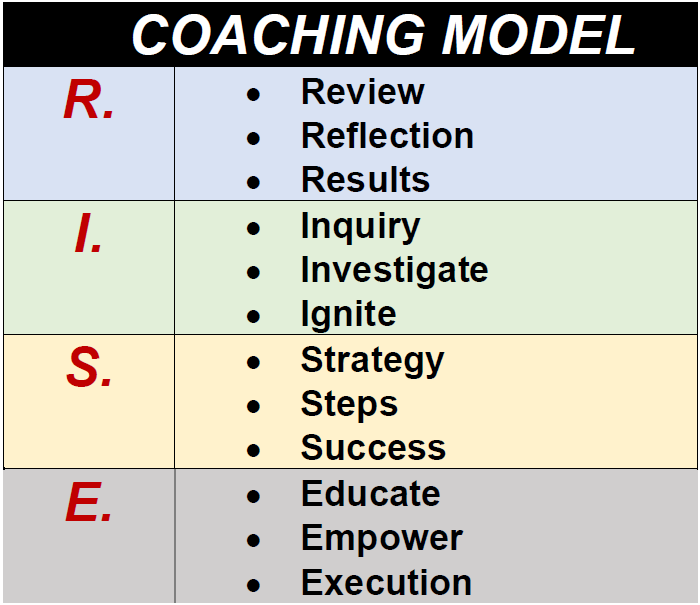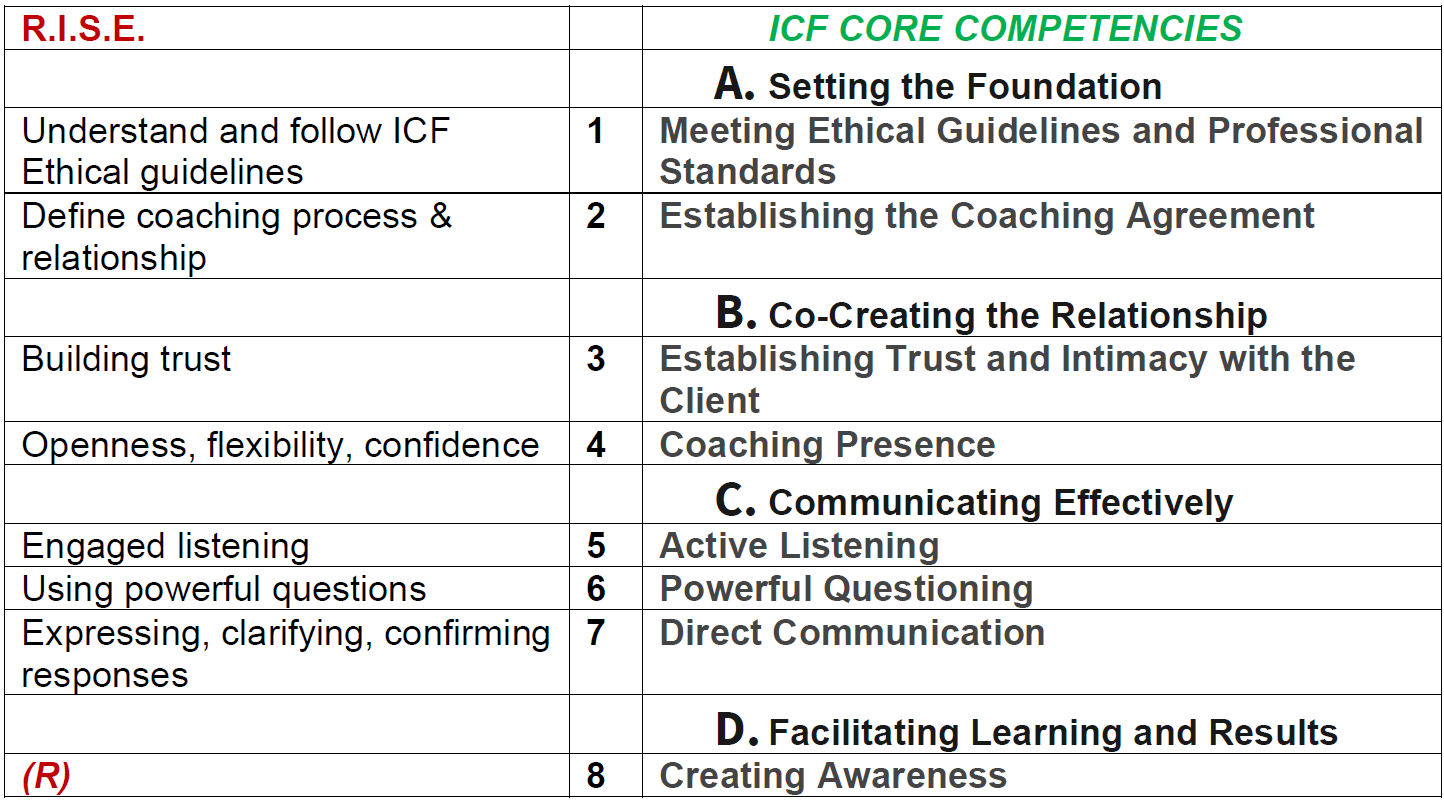A Coaching Model Created by Ramesh Kumar
(Career Coach, SINGAPORE)

Model Concept
When I started work on my coaching model, I went back to basics.
By asking myself what is Coaching for me? And my answer?
Coaching is a transformative process for personal and professional awareness, discovery and growth.1 (IAC, 2007-2011) http://www.certifiedcoach.org
And it is a partnership between my client and I. Thus, both of us undergo this continuous learning process where we become better versions of ourselves along each and every step of this journey.
1 International Association of Coaching, “The IAC Coaching Masteries”, 2007-2011, International Association of Coaching (E-Book) -http://www.certifiedcoach.org
The concept of my R.I.S.E. coaching model is inspired by 2 of my favorite inspiring quotations:
We rise by lifting others- Robert Ingersoll
Successful people are always looking for opportunities to help others. Unsuccessful people are always asking, ‘What’s in it for me?-Brian Tracy
From a coaching perspective, it means that we selflessly put the needs of our clients before our own needs. But, as we do so – as we work to support their dreams, goals and desired outcomes, others begin to take notice of us and how quietly we make the world a better place one person at a time. Then, those people begin to respond by helping us with our needs. During this time, we manifest qualities such as empathy, compassion, encouragement, humility, understanding and most of all, love.2 )
I love this info-graphic (Source: https://www.thecoachingtoolscompany.com/) 3that, in essence, exemplifies what we offer – and the benefits of coaching!

Key Steps of the Model
I have made an attempt to map the RISE Coaching model to the Eleven ICF Competencies as we dance with the moment in any coaching conversation.
2
3 https://www.thecoachingtoolscompany.com/
A good way of thinking about the RISE Model is to think about how we may partner with our clients to plan a journey. First, there is a review and reflection to decide on where the client is going and the results (the goal) desired by the client.
There follow inquiry and investigation to establish where the client currently is (client’s current reality and present situation). We then explore various routes (the options) to the client’s destination and possibly ignite (call for action) to kickstart the client’s journey. In the final step, with new awareness and knowledge, the client is empowered to establishing the will or way forward. Here, proper execution of an action plan with goal setting and accountability, we reaffirm that the client is committed to making the journey and is prepared for the obstacles that the client could meet on the way.

The R.I.S.E. Model Mapped to the ICF Competencies


Key Foundation of Model:
The coach ensures a safe space and supportive relationship with the client for personal growth, discovery, and transformation. The client is open to sharing and receiving perceiving the coach as a personal advocate. The client sees transformation and growth as manageable. And the client has realistic expectations of results and responsibilities of coaching.4
Key Elements of Model:
- Mutual respect and acceptance.
- Confidence and reassurance.
- The client feels safe to share fears without judgment from the coach.5
R: Review/Reflection/Results (Creating Awareness)
A coach focuses full attention on the client, processing information at the level of the mind, body, heart and/or spirit, as appropriate. The coach expands the client’s awareness of how to experience thoughts and issues on these various levels through a process of review and reflection.
The coach utilizes what is happening in the session itself (client’s behavior, patterns, emotions, and the relationship between coach and client, etc.) to assist the client towards greater self-awareness and positive, appropriate action.6
4 International Association of Coaching, “The IAC Coaching Masteries”, 2007-2011, International Association of Coaching (E-Book) -http://www.certifiedcoach.org
5 International Association of Coaching, “The IAC Coaching Masteries”, 2007-2011, International Association of Coaching (E-Book) -http://www.certifiedcoach.org
6 International Association of Coaching, “The IAC Coaching Masteries”, 2007-2011, International Association of Coaching (E-Book) -http://www.certifiedcoach.org
The client is free to express and engage with present reality. The client benefits from coaching insight and support on all levels.
I: Inquiry/Investigate/Ignite (Designing Actions)
Through the process of inquiry and investigation, the coach creates an environment that allows ideas, options, and opportunities to emerge. This enables the expansion of thoughts and actions through an expansion of the client’s awareness. The client is willing to leave his/her comfort zone to realize more options.
Here, there is trust, openness, curiosity, courage, and recognition of potential. Through exploration and discovery, the coach invites possibility by drawing on various scenarios to help the client see from a larger perspective. Possibilities are generated by the coach, the client and the collaboration of the two. The coach recognizes and helps the client acknowledge and appreciate his or her strengths and potential.
The coach uses what is happening in the session as an opportunity for learning and discovery. The coach helps the client expand on what could be-thinking beyond what was previously considered. The coach then brainstorms with the client, once there is a “spark” or “ignition” where the direction of appropriate action and progress for the client is identified.
S: Strategy/Steps/Success (Planning & Goal Setting)
A coach helps the client become or remain focused and working towards his or her intended goals. The feels capable and is clear about what he or she wants to accomplish or transform. The client is inspired by the possibilities generated earlier and moves forward purposefully.
By inquiring into the client’s intentions and goals, the coach helps the client to stay mindful of what is most important. The coach understands how the client’s values and/or beliefs support the intentions/goals and aligns coaching points with these values. The client commits to a co-created action plan that is aligned with his or her true desires and goals. There is clarity of direction of progress through periodically reviewing, revising, and celebrating the process and intentions.
The client is more excited or confident about the future and agrees to take more responsibility to achieve a successful outcome. The client is engaged and excited about the new direction, renewed commitment, skills or strategies, or fresh approach.7
7 International Association of Coaching, “The IAC Coaching Masteries”, 2007-2011, International Association of Coaching (E-Book) -http://www.certifiedcoach.org
E: Education/Empowerment/Execution (Managing Progress & Accountability)
A coach helps a client to create and use relevant and effective support systems and structures appropriate to the client’s needs. Coach partners client to help identify and build the relationships, tools, systems, and structures he or she needs to advance, manage and sustain progress.
The client is confident and secure in moving forward, knowing that resources are available or can be created. The client recognizes resources not previously identified. The client embraces responsibility for using, finding or creating resources. The client becomes empowered with this new appreciation or sense of responsibility and accountability.8
The coach supports the client to address the sustainability of systems and structures and uses the client’s values and/or sense of identity to ensure sustainability. The client understands what he or she needs to do to ensure the effectiveness and sustainability of the systems and structures. The coach and client address any inner conflict/challenges/obstacles that might interfere with progress and sustainability.9
In Conclusion:
On the surface, the R.I.S.E. coaching model seems fairly simple. However, the success of any coaching process based on this model rests solely on the essential element of any coaching relationship-the feeling of trust between coach and client. Without it, the client may not share important information or expectations which virtually guarantees ineffective coaching.
I believe that clients come to coaching to experience personal growth, discovery, and transformation-whether in their own lives or relationships, as part of an organization or in business. And one of the most important things the coach must do is to ensure a safe space and supportive relationship in which this can happen.
With the underlying core philosophy that as coaches, we also RISE by UPLIFTING our clients, we can create an environment in which allows us to explore, question, discover, create and develop sustainable systems for progressive growth. The desired effects are that our clients are open to sharing and receiving. We are seen by our clients as their personal advocates. Ultimately, our clients see transformation and growth as possible and manageable………as they successfully RISE to their fullest potential.
8 International Association of Coaching, “The IAC Coaching Masteries”, 2007-2011, International Association of Coaching (E-Book) -http://www.certifiedcoach.org
9 International Association of Coaching, “The IAC Coaching Masteries”, 2007-2011, International Association of Coaching (E-Book) -http://www.certifiedcoach.org
References & Bibliography:
Based on Coaching Concepts, Readings & Learnings from:
International Association of Coaching, “The IAC Coaching Masteries”, 2007-2011, International Association of Coaching (E-Book)
https://www.thecoachingtoolscompany.com/